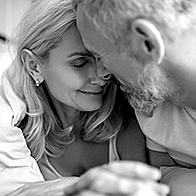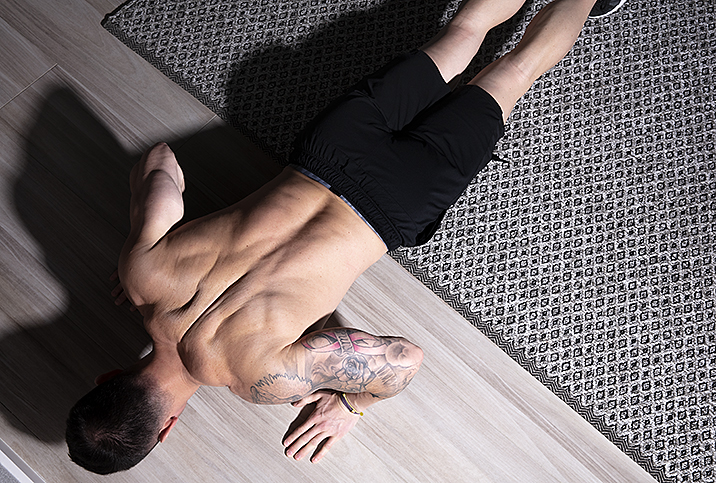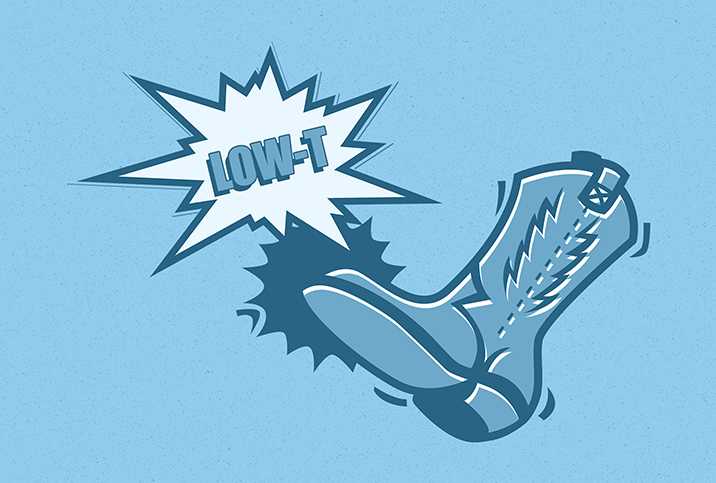Getting Fit for Older Men: 6 Workout Routines for Guys Beyond Age 50
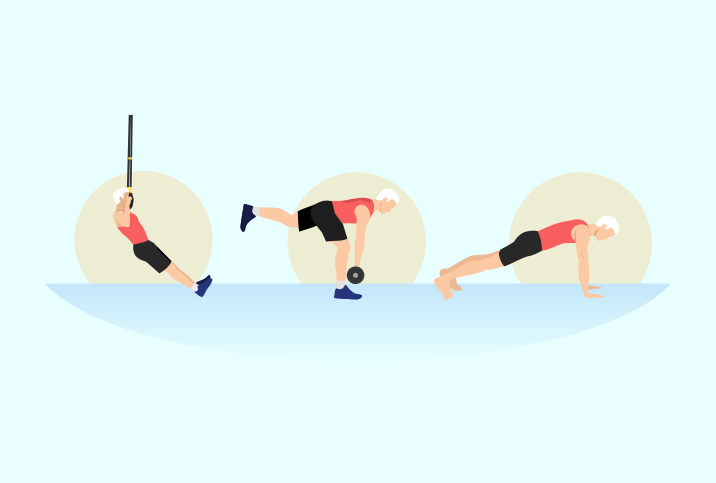
If you're a man in your 50s, you might feel every bit as young and virile as you did in your 30s. You're still the same guy, right? Perhaps a little grayer on top, with a few more aches and pains as you get out of bed in the morning. You may not have the same boundless energy. You're loaded with responsibilities, a career and likely a family. If you're a step slower, it's probably because you're carrying the weight of the world on your shoulders.
It's impossible to escape the passage of time. While it's possible to battle the effects of aging with a plan geared toward finding workouts and exercises that can get men over age 50 fit, the truth is, no matter what you do, your body is going to slow down as you get older.
The best strategy is to think about an exercise program specifically geared to your age group rather than one promoted to people in their 20s or 30s. By choosing the right workouts, men older than 50 can help bolster their strength in ways that can help them keep on truckin' as they get older.
Why men older than 50 should be fit
Maybe you skated through your 30s, even your 40s, without too many health issues. Sure, you might have had occasional back pain or perhaps you got a blood test saying your cholesterol was a little out of whack, but for the most part, there were no major complaints. Now that you've hit your 50s, it's possible that good luck may begin to take a turn if you're not paying attention.
"It's common around age 50 to suddenly notice you can't do the same things as before, especially if you don't exercise," said Laura Flynn Endres, a certified personal trainer and owner of the online team fitness game Get Fit Done, based in Lake Summerset, Illinois, and Los Angeles. "But also, even if you do, you don't have the same stamina. You aren't as strong as you used to be. Your balance gets worse. There's an obvious and overall leveling down that is typical at this age. Most people who come to me at this time are realizing that the longer they wait, the harder it will be to get back on the wagon. And if they haven't held themselves accountable to change by now, they realize they need help."
However, it's not just the overall physical leveling down that's taking place; it's all your body's internal workings, too, which will start to show evidence of neglect or even just the effects of time.
"The most common issues are high blood pressure, high cholesterol, diabetes, arthritis and obesity," said Raphael Konforti, a certified personal trainer and the senior director of fitness for YouFit Gyms, which has locations in 10 states. "Most men are seeking training to reduce or eliminate these chronic diseases that we know exercise and diet can combat. They also want to reduce or get off the medications they've been prescribed for these conditions that have side effects and rarely treat the root cause. They're looking to not only have their doctor tell them they're healthy but also to feel healthy so they can be active, strong and fit for another 30 to 40 years."
In your 50s, you start to grasp that you're on the other side of the proverbial hill. The last thing you want is for the latter years of your life to be plagued with more health problems and pain than normal. A solid, effective workout plan can help make the second half of your life more rewarding and full.
Designing a workout program for men older than 50
The important point to remember about starting a new exercise program in your 50s is that your body likely doesn't work quite the same as in the past. If you try to jump back into the type of high-intensity program you followed in your 20s, you may end up injured or too sore to move for a few days. The best strategy is to start slow, work your way up gradually and keep in mind that a little bit is better than nothing. Even a 15- to 20-minute program three days per week can help you develop a baseline for more exercise over time.
You also need to make sure you're incorporating the most important exercises to combat age-related declines.
"The best movements for maintaining strength, flexibility and increasing heart rate are what are known as 'primal pattern movements,'" Konforti explained. "Every exercise in the gym and in life is some variation of one of these seven foundational movements: squats, lunges, hip hinges, upper-body pulls, upper-body pushes, rotation and gait, such as running, hopping or side shuffling. My favorite way to get all these done weekly is to superset pairs of these so they're done back to back. This adds in the metabolic conditioning component since you'll be using lots of large muscle groups with less rest between sets."
Aside from a gym routine that helps bolster functional fitness to translate to daily life, experts also emphasized daily movement.
"Walking, tennis, pickleball or hiking; I always help clients find a hobby that's active," Konforti added.
Endres agreed with Konforti's assessment of focusing on primal pattern movements, but noted the importance of including balance work in a regular routine.
"I always include balance exercises for clients of all ages," she said. "If balance is an issue, the exercises are intended to regain balance. If it's not an issue, we do it as maintenance to be sure it sticks around. Balance training is critical to preventing falls."
The 6 best workouts for men older than 50 to get fit
While lots of exercises are great for men older than 50 and target most of those primal pattern movements, Endres pointed to the following six exercises as good options to get started:
1. Goblet squats

A goblet squat is a squat variation in which you add resistance to a bodyweight squat by holding a dumbbell or kettlebell in front of your chest in both hands.
"This is my favorite exercise because it's safer than barbell back squats and it's easy to adapt to your current fitness level," Endres explained. "Because you hold the dumbbell in front of you with both hands at your chest, the movement pattern is easier to control."
Include two to three sets of 10 to 15 repetitions in a workout routine.
"Hold a dumbbell that's heavy enough to make 10 reps challenging but doable," she advised.
2. Single-leg dead lifts
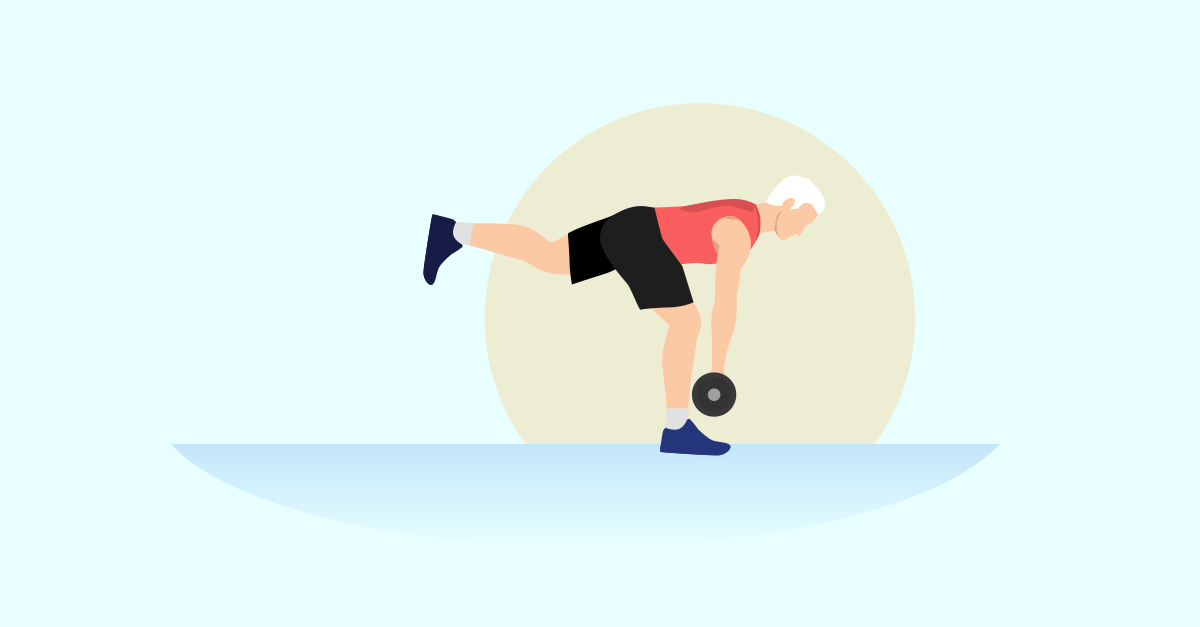
Single-leg dead lifts hit two birds with one stone. They're a hip-hinge movement that helps strengthen the muscles used when bending over and standing back up again (glutes, hamstrings and lower back), but they're also an excellent move to work on your balance. It's best to start the exercise unweighted to master proper form. As you feel more comfortable with the movement, add a dumbbell or kettlebell for increased resistance.
Include two sets per leg of 10 to 15 repetitions.
3. Pushups
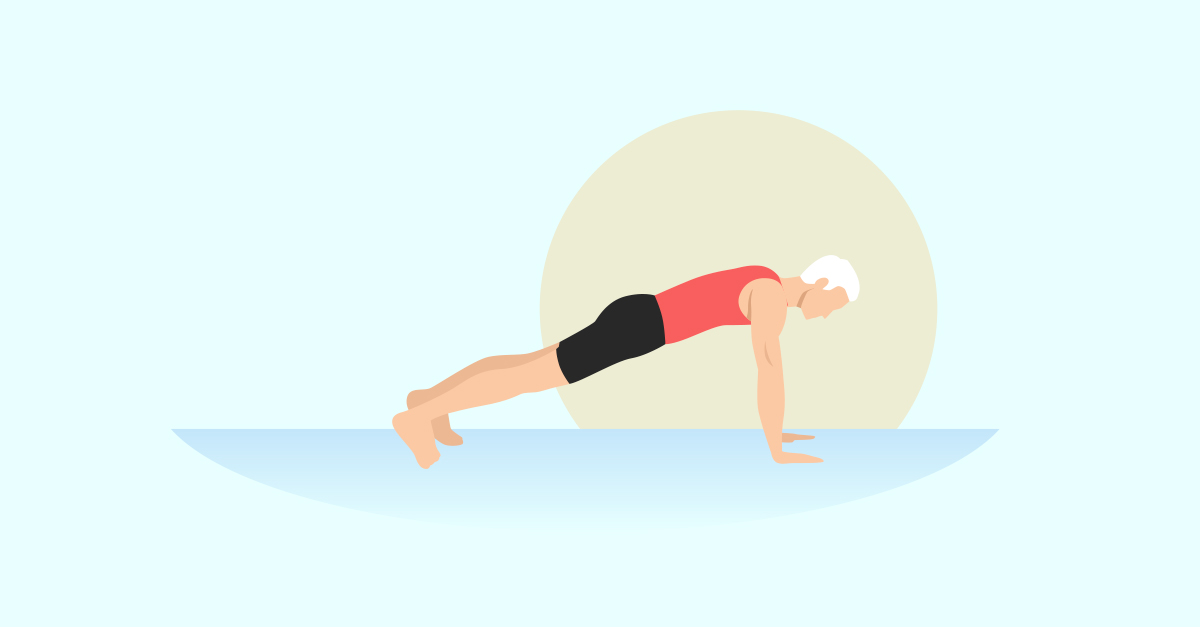
Pushups are a favorite of Endres' because they work more than just the chest muscles: They work the shoulders, biceps, triceps, upper back and core muscles, too.
"I tell my clients all the time that it takes a strong core to do a good pushup. If they don't brace their core, they do 'the worm' as they press up, meaning their hips lag behind," Endres explained.
If your chest (or your core) isn't strong enough to start with a regular pushup, Endres suggested moving to an inclined pushup, placing your hands on a bench, tabletop or even a wall to perform the move.
Include three sets of 10 to 15 repetitions.
4. Bodyweight rows

Bodyweight rows are an excellent choice to work on upper-body pulling. You can do these with a barbell that's affixed at roughly hip height (a Smith machine makes it easy to adjust barbell height) with a piece of equipment like the Lebert Equalizers or a TRX suspension trainer. Regardless, you'll "hang" underneath the equipment and use your back and arms (and core, too) to pull yourself toward the bar or handles.
"Pulling exercises are crucial to maintaining good posture and back and shoulder strength," Endres noted.
Of course, if you have the strength, you can opt for pullups instead.
"Pullups are the king in this category, but if you don't have the strength to do them or you don't have a pullup bar, you can substitute bodyweight rows," Endres said.
Include three sets of 10 to 15 repetitions.
5. Bird dog
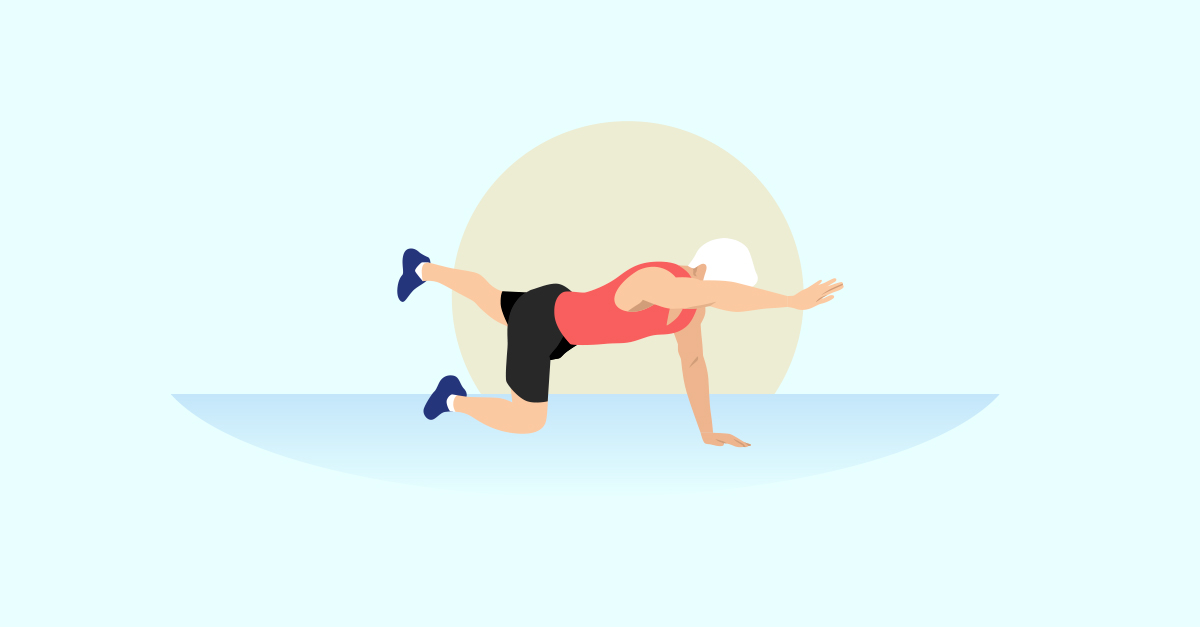
"This exercise looks easy but it's not," Endres said about the bird dog exercise. "It challenges your balance and works your back, glutes and even the abs when it's done correctly. Plus, it's safe and highly effective. In this exercise, you start on your hands and knees, then reach forward with an arm and backward with the opposite leg. Once there, lift the entire 'table' an inch higher and notice your abs working. Lift and lengthen and hold for three to 10 seconds, alternating sides."
Perform two sets of 10 to 15 repetitions per side.
6. Moderate- or high-intensity cardio intervals
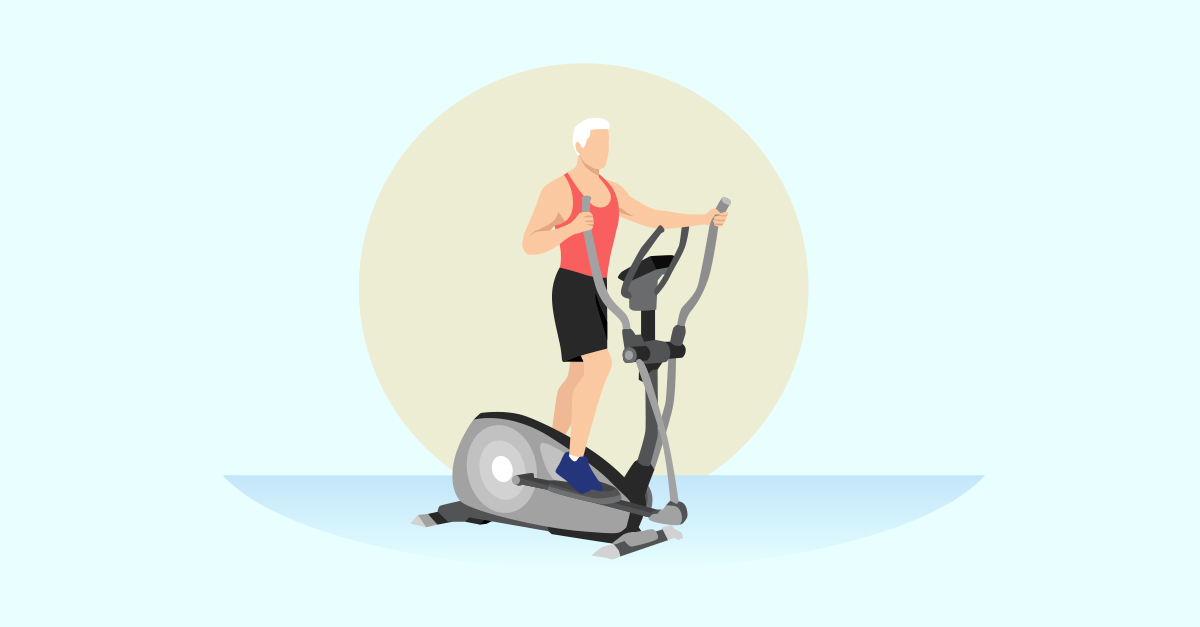
While most men in their 50s shouldn't start with high-intensity training, Endres clarified that "high-intensity" is relative to your current fitness level. In other words, if you're just getting started with an exercise program, it's possible to do high-intensity walking if you're willing to push yourself.
"I tell my clients I want them to push at a 6 or 7 on a scale of 1 to 10, making it relative to what feels like high-intensity to them," Endres said. "Whether it's walking on a treadmill at an incline, riding a stationary bike, rowing or elliptical, alternate 30- to 60-second intervals of high-intensity, a 7 on that scale, with 60 seconds of low-intensity, maybe a 4 or 5, to train your heart and lungs to be more efficient and health."
Perform these intervals for 15 to 20 minutes, three to five days per week.
Exercises for men older than 50 to avoid
While both Konforti and Endres will tell you there's no such thing as a completely "off-limits" exercise—as that would depend on an individual's personal strength, stamina and range of motion—they both voiced concern over high-intensity programs for beginners.
"If they haven't been exercising regularly, men in their 50s should steer clear of anything high intensity, high impact or high risk," Endres noted. "This means exercises like sprinting, box jumps, heavy dead lifts or kettlebell swings. It doesn't mean these exercises are off the table for good, but these are exercises that require a solid foundation of strength, stamina and proper form to do well. And if that's not there, the risk-to-reward ratio is not ideal."
At the end of the day, it's always important to remember that you have to start somewhere and something is always better than nothing.
"The most important key is to stay active. The more active you are now, the more active you'll be able to be later in life," Konforti said. "Just because you're getting older, that doesn't mean you can't push hard in your workouts. You just have to be more conscientious about how you push in those workouts."
Consistency is essential to long-term health and fitness for older men, so carve out time in your day and be intentional about adding a workout routine or general activity to your lifestyle. You'll be thankful you did as you reach your 60s, 70s and beyond.








